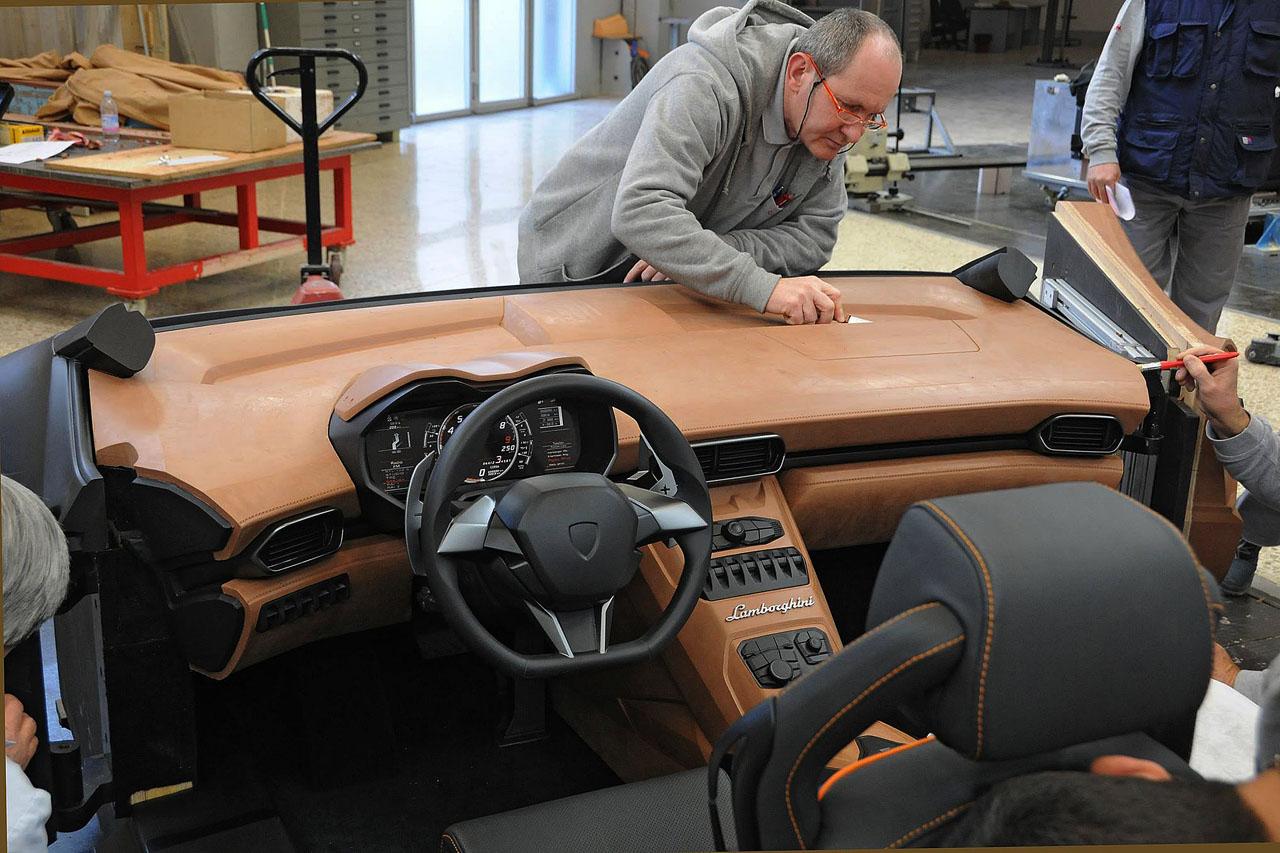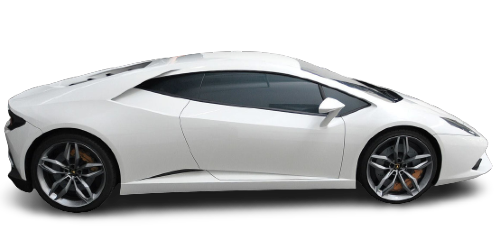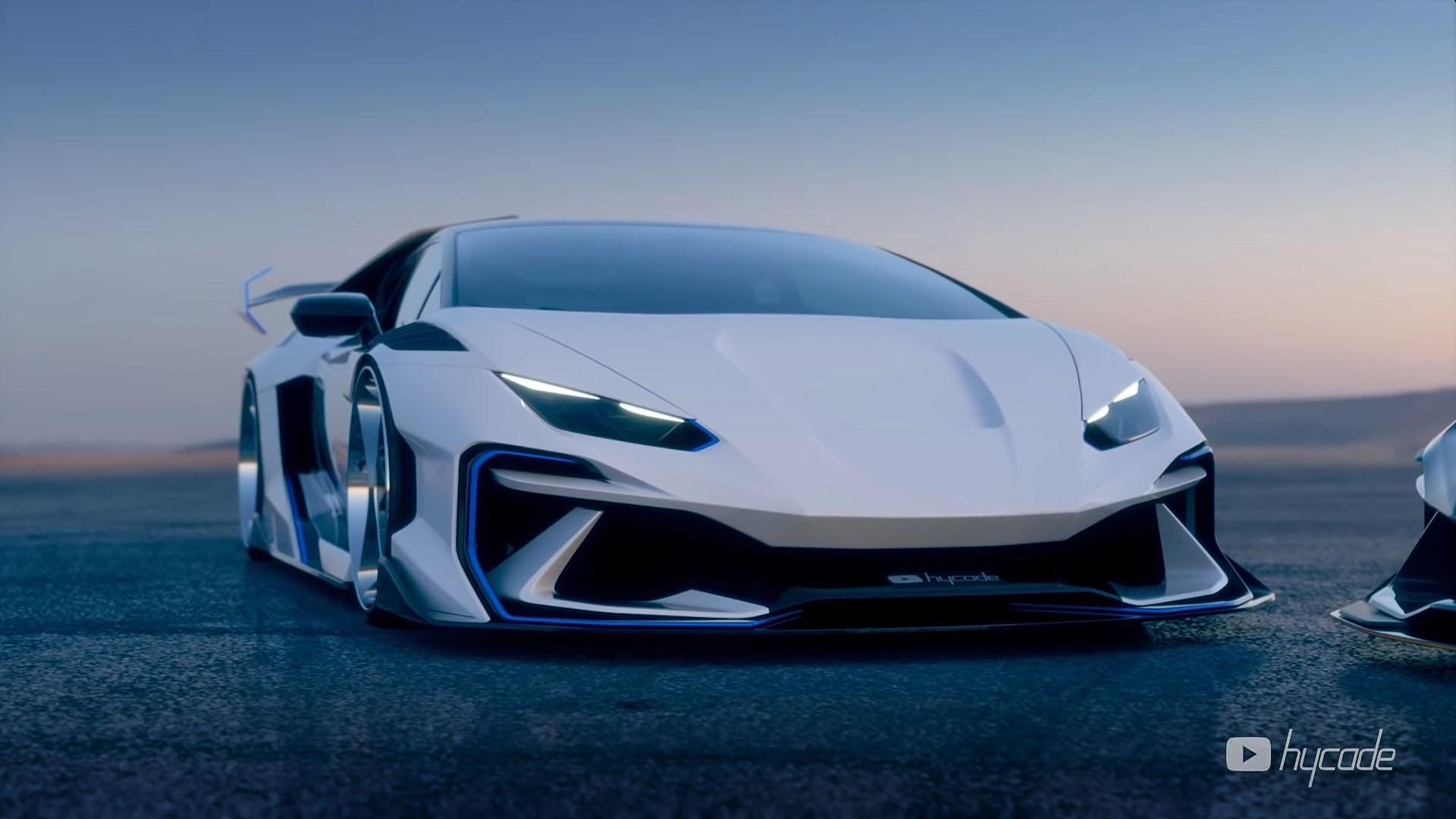We all know the development for the Lamborghini Gallardo successor has taken many years, in fact, the first concept designs that have been published recently date back to 2009, sure these are very wild and aggressive, but still, they show the enormous amount of time and effort that has gone into the creation of a worthy model to take over the reign from the Gallardo as the new Lamborghini V10 masterpiece.
The very first exterior design studies show a very wide and low stance for the new Lamborghini model, naturally, this isn’t possible in real life, but it does give an impression of which direction the Centro Stile wanted to go the same thing with the interior renderings. In fact, some of the early interior designs already show the hexagon design theme that would make it into the Huracán production model.
On a Lamborghini not much is there for show only, just about every design element has a function too so the design of the seats is another major part of the development program for a new model made in Sant’Agata. One of the designs even shows a reference to a Super Hero in the way the sections on the seat flow into each other.
Dashboard designs dated in 2010 show a steering wheel that is very close to the Aventador unit while the display itself looks identical in the end the Huracán would receive a bespoke design for the dashboard cluster, the steering wheel, the central console, and the seats just like it should be.
To really compare the ‘old’ against the ‘new’ the usual way is to put both next to each other naturally in the early stages of development this isn’t an option in real life, so Lamborghini’s Centro Style made 3D renders that show the Gallardo and the Huracán next to each other in an identical shade so they could judge the look and feel of the car that would have to replace the most successful Raging Bull ever.
Once the virtual design stage reaches a certain level the next step for a company like Automobili Lamborghini SpA is to create scale models for the most interesting concept studies, note that these are usually rather large scale versions like 1/10th or 1/5th so the designers and the Board of Directors can get a good impression of how the car is going to look in real life.
There are four different designs that went into the scale model stage, all finished in silver metallic a shade that would also adorn the Huracán when shown in the United States even at this early stage Lamborghini was thinking about different markets for this new car, using more subtle shades for the prototyping stage instead of bright green, yellow or orange they went for a classic looking grey metallic a shade that also happens to show every line and edge on the design, so the choice for this paint isn’t that far-fetched.
One of these scale model concepts shows a Reventon-inspired front bumper with large, angular intakes and a very stylish, deeply carved-in air intake behind the doors a lot of squared lines on this design which might be a little over the top, so a second model is loosely based on this same Reventon style front bumper but the air intakes are more integrated into the bumper while a black section is installed, just like on the triangular air intake in front of the rear wheels looks aggressive and wouldn’t have been a bad choice for the production car if you ask me.
The third scale model has a very innovative air intake on the side of the car, a large crease starting almost at the front of the door running into the rear wheel arch to angle back up and house a rectangular intake behind the door up front the corner air intakes run high into the fenders while a black spoiler fin sits high on the front bumper, almost an extension of the front hood in fact while I like the design of the front it might not have been the best option for actual production as it might not meet worldwide legal regulations, a must for the V10 model from Lamborghini.
The fourth and final scale model shows a natural evolution from the Gallardo into the 21st century, again angular styling with impressive creases on the door and front hood note that none of these scale models actually show the double Y-shaped LED headlights that would be used on the Huracán, which makes me believe this was a decision made at a later stage in the development.
Now things get really interesting in the development of a new car when the stage of the 1:1 model is reached, this is usually a clay mockup that isn’t even near being drivable, but it does show the design of the car in real life, you can walk around it and take a glance from every angle to see how the actual production model will look the white model photographed inside the secured Centro Stile shows one of the early Huracán concepts a lot of this model will eventually be used for the production car, but things like the lower side air intake in front of the rear wheels will be changed, also the design for the engine cover didn’t make it into production in the end.
To get a feel of how the interior for a new model looks this is also created in full scale, mostly with the textures and materials that would be used for the production model too, complete with the steering wheel, seats and a mockup display on the dashboard almost looks like a driving simulator, but it does allow to make final adjustments before actual production is started.
It is always nice to get a glimpse of what is going on behind the scenes during the design and development of a new Lamborghini, and these sketches and photos really show just how much effort went into creating the next-generation V10 Raging Bull at Sant’Agata.
While we think these images are in fact copyrighted Automobili Lamborghini SpA they were found on a FaceBook page by Sketch Storm.




